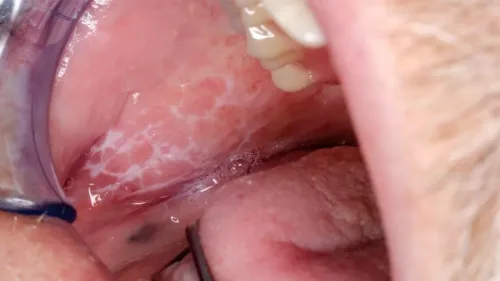Source: www.theengineer.co.uk
Author: Jason Ford
A condition for which there is no cure could be treated more effectively following EPSRC-funded research being carried in the Department of Materials Science and Engineering at Sheffield University.
With £471,789 in funding, the three-year project will develop a patch that can stay in the mouth to treat oral lichen planus (OLP), a chronic inflammatory mucocutaneous disease that presents itself as white, red and/or ulcerative lesions of the oral mucosa, which is the moist tissue that lines parts the body including the mouth.
Drugs including steroids are available to treat OLP, but there is currently no effective way to administer them. Steroids also come with side effects and the relatively high doses needed to treat OLP can exacerbate them.
Now, Professor Ipsita Roy and Dr David Alexander Gregory will develop a solution that delivers the drug locally and in a spatially selective manner. Professor Roy explained that this would facilitate a much lower dosage of therapeutic.
A significant challenge, however, is to develop an adhesive that works in the wet environment of the mouth where tissue is highly mobile.
To this end, the Sheffield team has obtained proof of concept data for a new highly adhesive polymer system (polyhydroxyalkanoates (PHAs)) that is produced by bacteria and is environmentally sustainable. This has been coupled with the polydopamine chemistry, used by mussels to attach to wet surfaces, to further enhance adhesiveness and be developed into an OLP patch.
Work at Sheffield has shown that PHA is approximately 6.5 times more adhesive than polycaprolactone (PCL), a frequently used medical polymer. By utilising polydopamine chemistry, adhesiveness can be improved by 30-to-40 per cent.
“We will need to produce the PHA with suitable mechanical properties that match that of the tissue inside the mouth,” said Professor Roy. “The dopamine chemistry will have to be optimised to get maximum adhesion.”
She added that processing of the PHAs will be carried out using electrospinning and 3D printing.
“In both cases we will create a spatial gradient of the drugs so as to deliver the right concentration and in the right direction,” she said.
Ultimately, the team is aiming to develop a patch with adhesiveness that will last for up to 24 hours. They plan also to add an antifungal agent to prevent the additional fungal infection that accompanies OLP.


Leave A Comment
You must be logged in to post a comment.